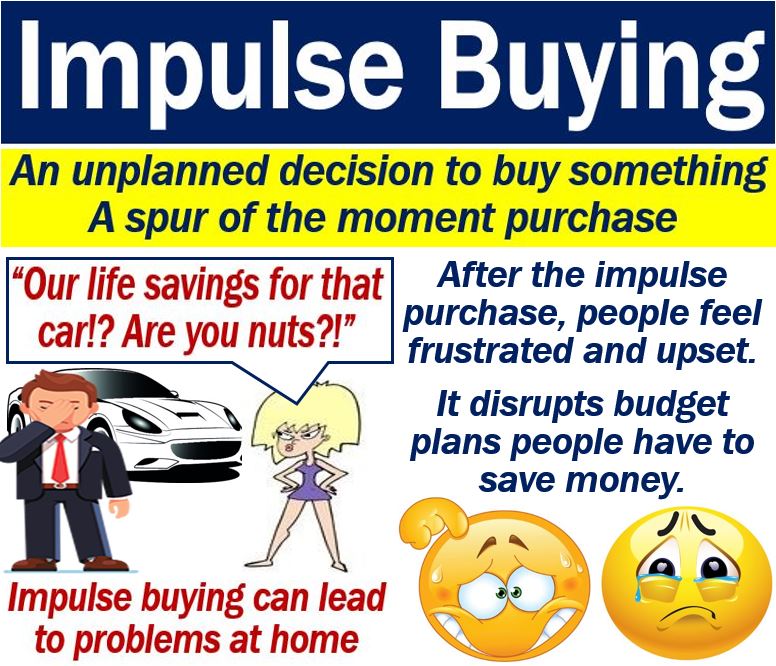Impulse Buying or Impulse Purchase is the buying of a product on the spur of the moment. In other words, the person had not planned to purchase that product, i.e., they decided without any premeditation. Impulse buying is all about emotions and feelings rather than logic and planning. The person’s sudden decision to purchase something is the result of suddenly seeing the product.
Impulse buying may also be due to exposure to an extremely effective promotional message.
Impulse purchases occur with a wide range of products. The consumer may suddenly decide to buy, for example, a chocolate, a pair of shoes, a scarf, a work of art, or even a car.
May lead to problems
Sometimes, the action leads to problems such as feelings of guilt, disapproval by family and friends, or financial difficulties.
Develop Good Habits says the following regarding impulse buying:
“The impulse buy is a weakness that many succumb to. No matter how frugal you tend to be, sometimes it is difficult to resist making an impulse purchase.”
“Giving in to impulse buying is not only hard on your wallet in the short term, but the habit prevents you from developing good financial practices in the long term.”
In response to the negative consequences of impulse buying, there has been a rise in educational programs aimed at promoting financial literacy and responsible spending habits among consumers.

Impulse buying and marketers
Retailers and marketers exploit impulse buyers or impulse purchasers, whose desire for instant gratification boosts their revenue. Revenue is the income a company makes from the sale of goods and services.
Marketers of chewing gum, mints, candy, and chocolate get a considerable proportion of their sales from impulse purchases. Candy, chocolate, mints, etc. are impulse goods.
In supermarkets, for example, they place their goods prominently at the checkout aisles. Shoppers see them and make instant, i.e., spur of the moment, shopping decisions.
We also find these goods near the cash tills at filling stations and 24×7 stores.
Standing next to many adults are their backup impulse buyers, i.e., their children. Nobody’s desire for instant gratification is stronger than that of a child.
The digital age has amplified impulse buying, as e-commerce platforms use algorithms to personalize shopping experiences and target consumers with products that are more likely to appeal to their spontaneous desires.
Impulse buying and emotions
Emotions and feelings drive all impulse purchases. None of them have anything to do with sensible thinking and logical planning.
Marketers are aware of this. They study the psychology of the human being, especially our feelings, and exploit them.
Sports fans may suddenly feel the urge to buy something because it displays their national flag. The urge to buy is particularly strong if their country’s team is playing in a major international championship.
For example, during the FIFA World Cup football (soccer) tournament, hundreds of products globally magically have the national flag painted or printed on them.
Seeing your national flag triggers passion. Passion is a strong emotion, and strong emotions drive impulse purchases.
